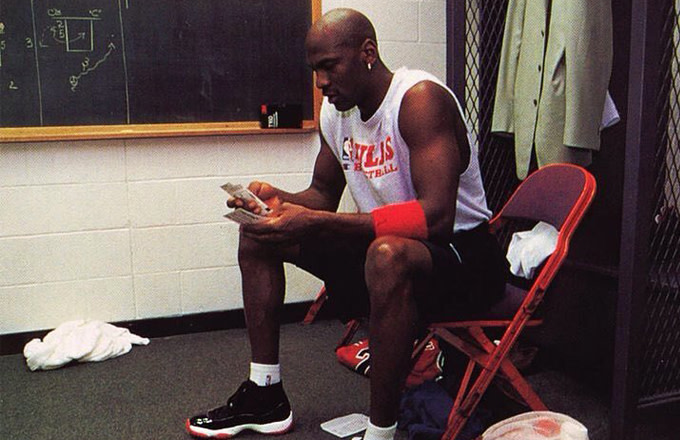[vc_row][vc_column width=”2/3″][vc_column_text]Thereâ€
The black and red version was famously captured on Jordanâ€
MJ wore that bred pair in the locker room after an unfathomable 72-10 season during which he was crowned MVP of the All-Star game (more on that later), MVP of the regular season, and MVP of the Finals.[/vc_column_text][/vc_column][vc_column width=”1/3″][vc_single_image image=”81070″ img_size=”full” onclick=”link_image”][/vc_column][/vc_row][vc_row][vc_column][vc_column_text]
The Design
Because Jordan had retired to play baseball in 1995, the higher ups at Nike were expecting to discontinue the Jordan signature series after the 10th iteration. Apparently, no one checked Tinkerâ€
Hatfield designed the shoe (which he called his favorite that he ever made in a documentary called Just for Kicks) with advanced tech. Jordan reportedly had his eye on patent leather not only for its elegant look, but also because of its rigidity to keep his foot locked in during aggressive cuts on the hardwood. The ballistic Cordura mesh was meant to cut weight, take a beating, and allow for increased flexibility. Carbon fiber was enlisted on the outsole because it had great strength and cut weight. All told, the model was a huge flex from the crew in Beaverton, who had designed this shoe in secret.[/vc_column_text][/vc_column][/vc_row][vc_row][vc_column width=”1/2″][vc_column_text]In the Netflix documentary series Abstract, Jordan said about that first black and white edition of the 11: “I wanted a lifestyle basketball shoe where you still play the game with the shoe and then at the end of the day, you can wear it with a tuxedo.†Tinker Hatfield, the sneaker design GOAT responsible for the 11, said:
“We sourced this really high quality patent leather and a few months later pulled it out of a bag and showed it to him in a hotel room. He basically said ‘Holy Shit! This is amazing.â€
The OG’s
The retail version of what came to be known as the “Concord†Jordan 11 arrived six months later in November during the next season, with his original number 23 on the heel. During that season, Jordan wore the same black and red version that returns in December in its original form and even in its original box.[/vc_column_text][/vc_column][/vc_row][vc_row][vc_column width=”1/2″][vc_column_text]That seasonâ€
As for the three OG colorways mentioned here, there have been a total of four versions of the Concord released, three of the Columbia, and finally four of the Bred once this weekend’s release is complete.[/vc_column_text][/vc_column][vc_column width=”1/2″][vc_single_image image=”81071″ img_size=”full” onclick=”link_image”][/vc_column][/vc_row][vc_row][vc_column][vc_column_text]
A Million Pairs?
Nike says that the Concord release from last holiday season was the largest single release in the storied companyâ€
